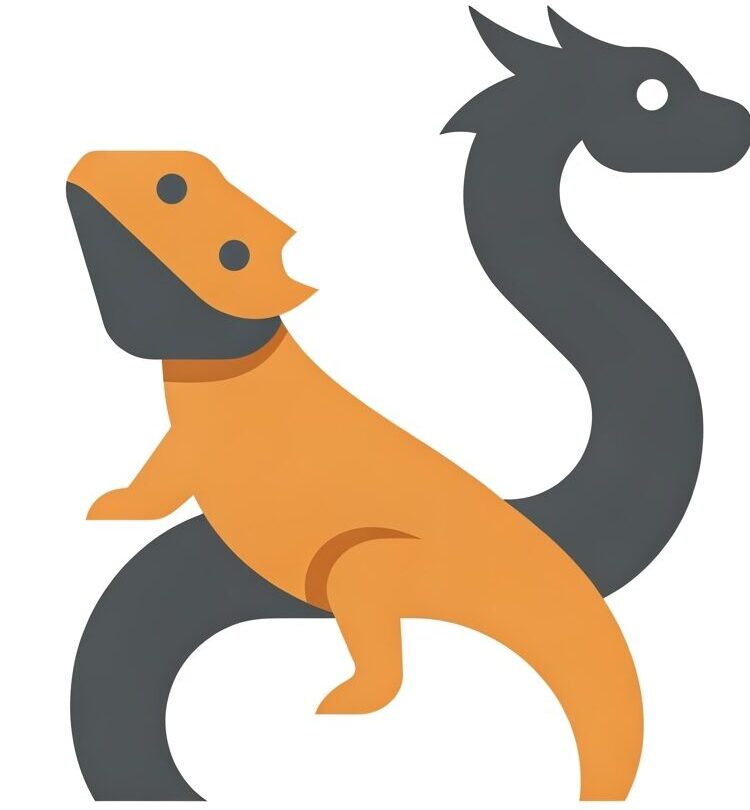Ideal Substrate Type for Bearded Dragon: Setup & Guide
Choosing the right substrate is a critical part of providing a healthy and enriching environment for your bearded dragon. This guide will cover the best substrate options for your beardie, why it matters, and how to achieve the ideal setup.
The Ideal Substrate Type
The ideal substrate for a bearded dragon is a topic of much debate among keepers. However, a solid, non-loose substrate is now widely considered the safest and most practical option, especially for beginner keepers. Ideal options include:
- Ceramic tile: Easy to clean, durable, and helps to keep your dragon’s nails trimmed. Choose textured tile for better grip.
- Reptile carpet: A commercially available carpet specifically designed for reptiles. It’s relatively easy to clean and provides a solid surface. Make sure to buy ones without loops to prevent nail snagging.
- Paper towels: An economical and easily replaceable option, particularly suitable for quarantine or hatchlings.
- Shelf Liner/Non-adhesive Vinyl: Another affordable option. It’s waterproof and easy to clean.
While loose substrates like sand or calcium-sand have been traditionally used, they pose a significant risk of impaction, especially in young or unwell dragons. If you absolutely insist on using a loose substrate, a bioactive setup with a well-established cleanup crew and a carefully researched substrate mix (e.g., topsoil/playsand/clay mixture) is the most responsible approach. However, this requires experience and constant monitoring.
Why is This Parameter Important?
A proper substrate is essential for several reasons:
- Preventing Impaction: Bearded dragons are prone to accidentally ingesting substrate when they eat. Ingested loose substrate, particularly sand, can accumulate in the digestive tract and cause impaction, a potentially fatal condition.
- Hygiene: A substrate should be easy to clean and maintain to prevent the buildup of harmful bacteria and parasites. Unhygienic conditions can lead to health problems like skin infections or respiratory illnesses.
- Digestion: Proper heating and a solid substrate allows the bearded dragon to properly digest its food by sitting on the warm surface, aiding with gut motility.
- Enrichment: While solid substrates don’t provide digging opportunities, they can be combined with other forms of enrichment like climbing branches, rocks, and hides.
- Humidity Control: Some substrates, particularly loose ones, can retain moisture, increasing the humidity in the enclosure. High humidity can lead to respiratory infections in bearded dragons. Solid substrates do not retain moisture to the same degree.
How to Achieve and Maintain
Here’s how to achieve the ideal substrate setup:
- Choose the Right Substrate: Select one of the recommended solid substrates based on your budget, aesthetic preferences, and ease of cleaning.
- Installation:
- Ceramic tile: Measure and cut the tile to fit the enclosure floor. Smooth any sharp edges.
- Reptile carpet: Cut to fit the enclosure. Replace regularly or clean thoroughly.
- Paper towels: Layer paper towels over the enclosure floor. Replace daily or as needed.
- Shelf Liner/Non-adhesive Vinyl: Cut to fit the enclosure. Clean regularly.
- Cleaning: Spot clean the substrate daily, removing any feces or uneaten food. Thoroughly clean or replace the substrate at least once a week, or more frequently as needed. Use reptile-safe disinfectant.
- Placement of other items: Ensure food dishes are elevated on a rock or platform to prevent accidental ingestion of the substrate.
Common Problems if Incorrect
Using the wrong substrate can lead to several health problems:
- Impaction: As mentioned above, ingesting loose substrate can cause impaction, leading to constipation, lethargy, and even death.
- Respiratory Infections: High humidity caused by moisture-retentive substrates can lead to respiratory infections, characterized by wheezing, nasal discharge, and lethargy.
- Stress: An unsuitable substrate can cause stress, leading to decreased appetite and immune function.
Conclusion
Choosing the right substrate is essential for the health and well-being of your bearded dragon. Solid substrates offer a safe, hygienic, and easy-to-maintain option. By following the guidelines in this article, you can create an ideal environment for your beardie to thrive. Remember to observe your dragon’s behavior and make adjustments to the substrate as needed to ensure its continued health and happiness.
